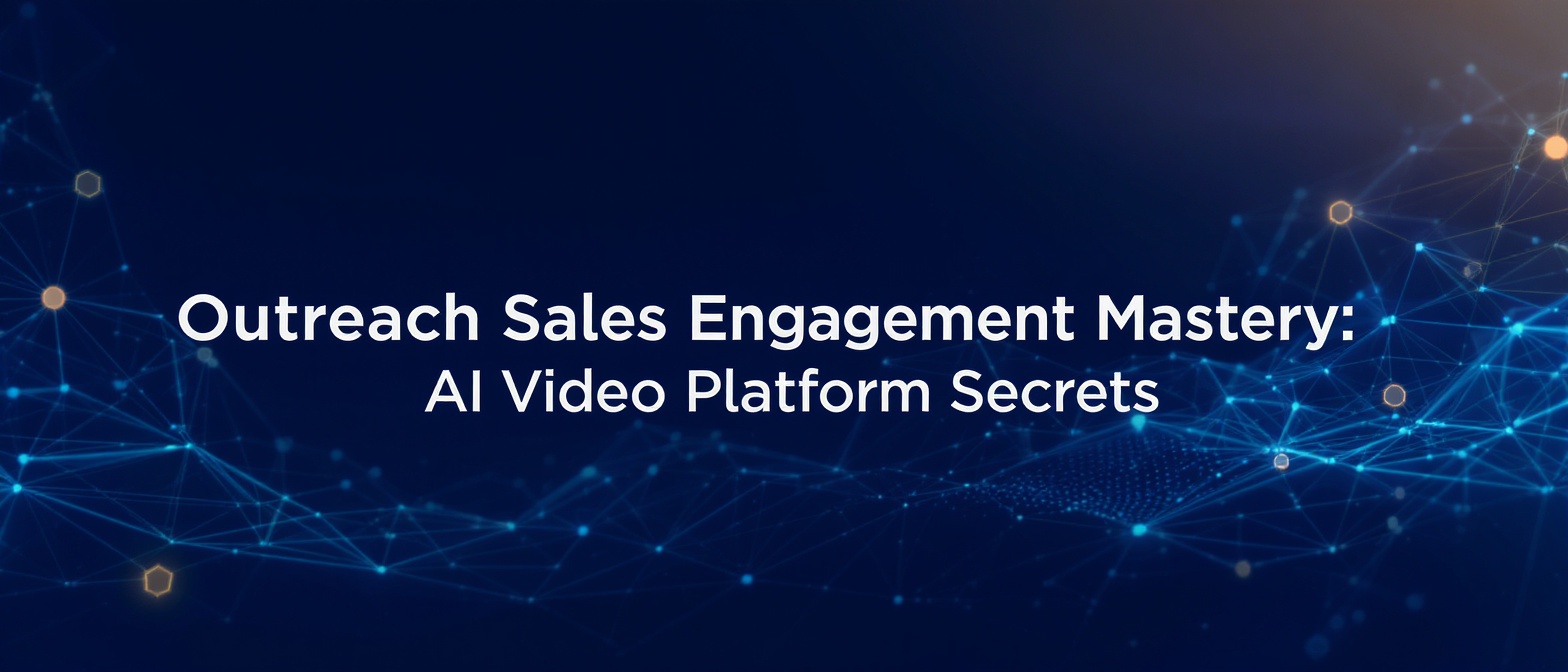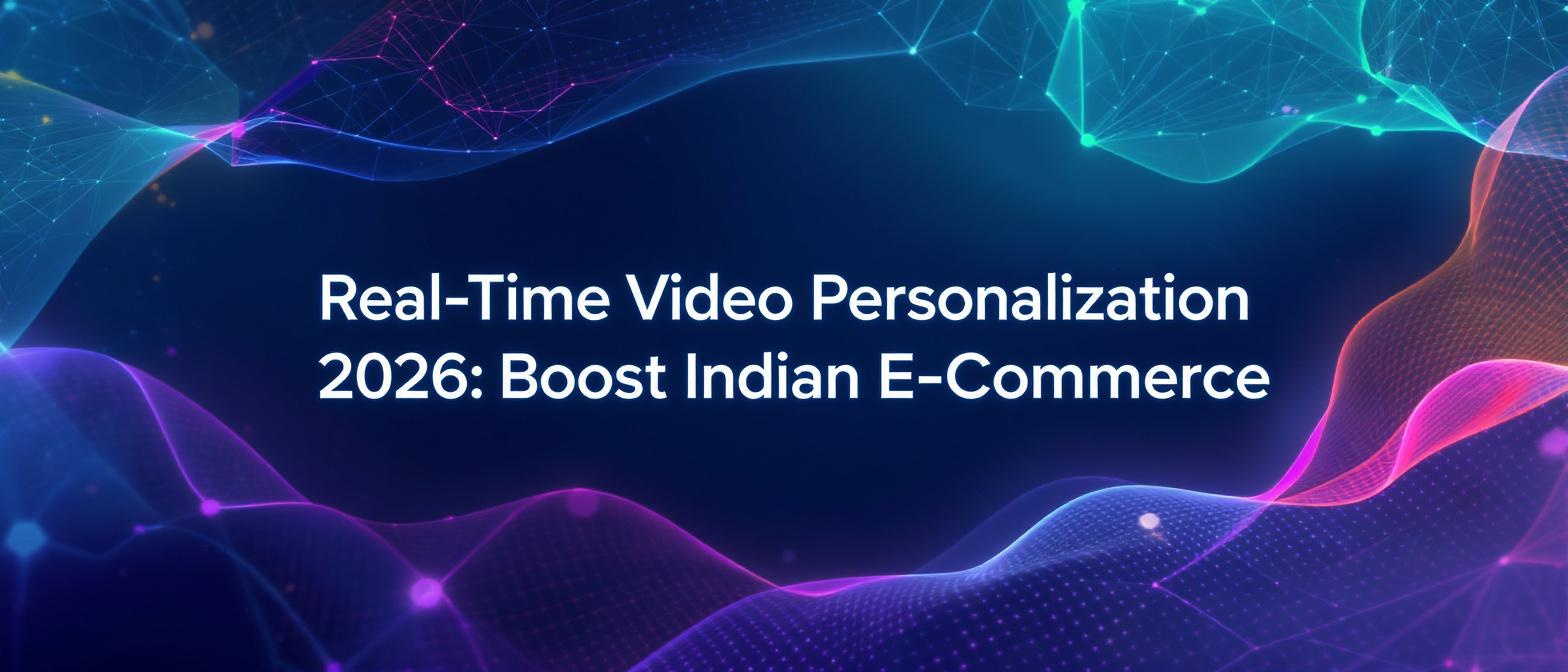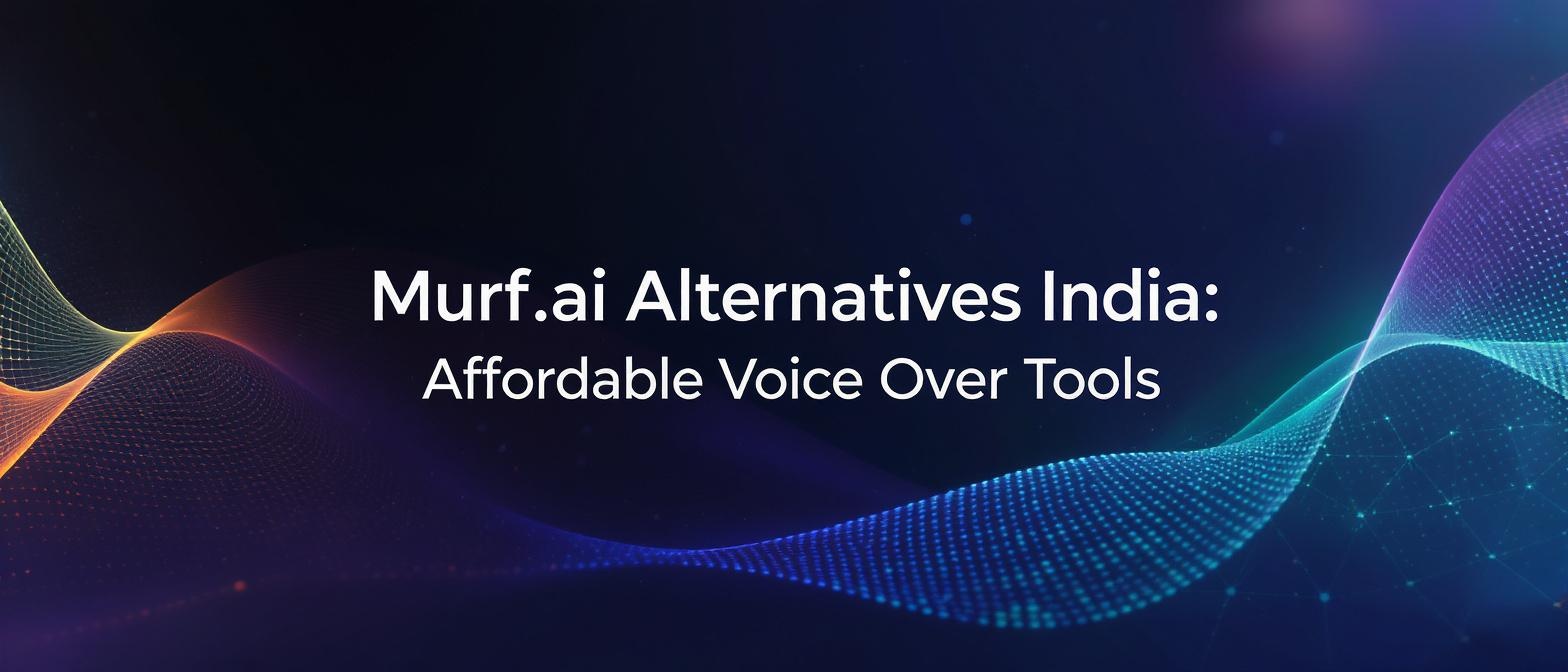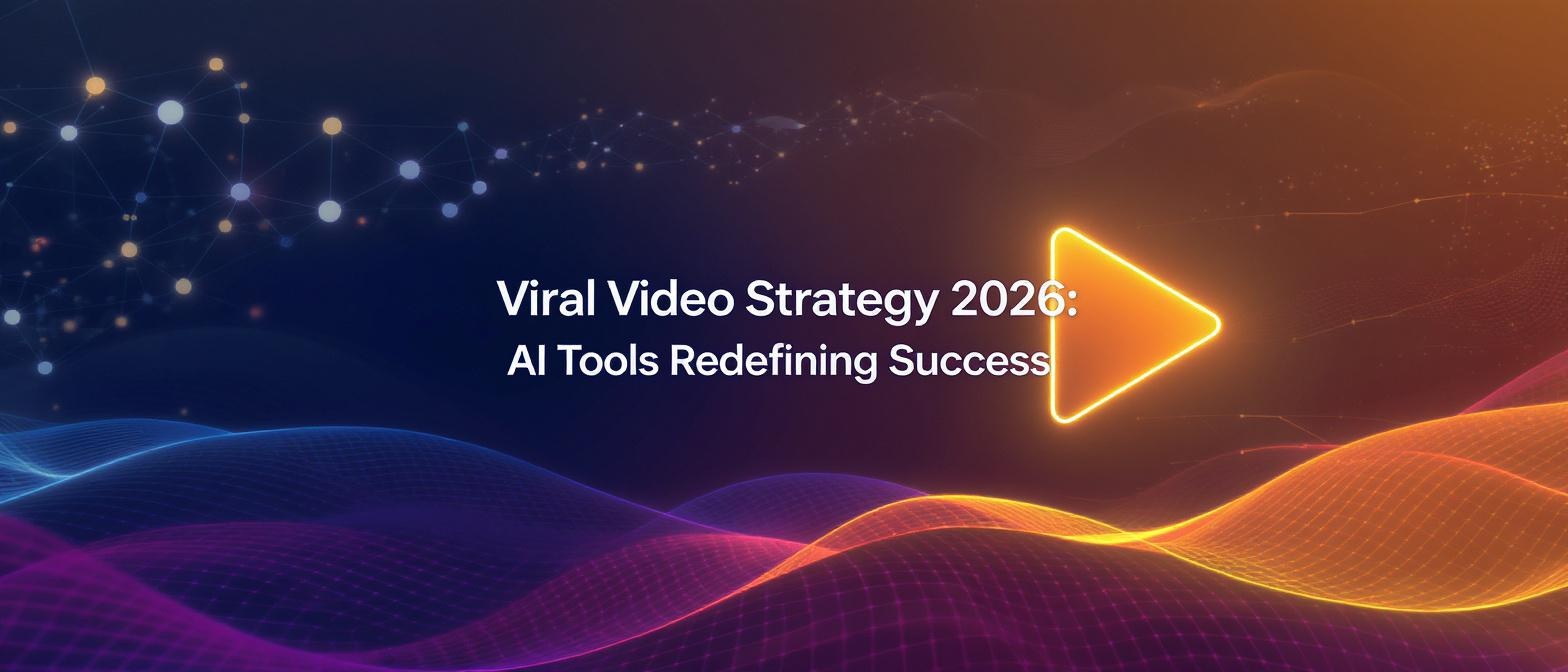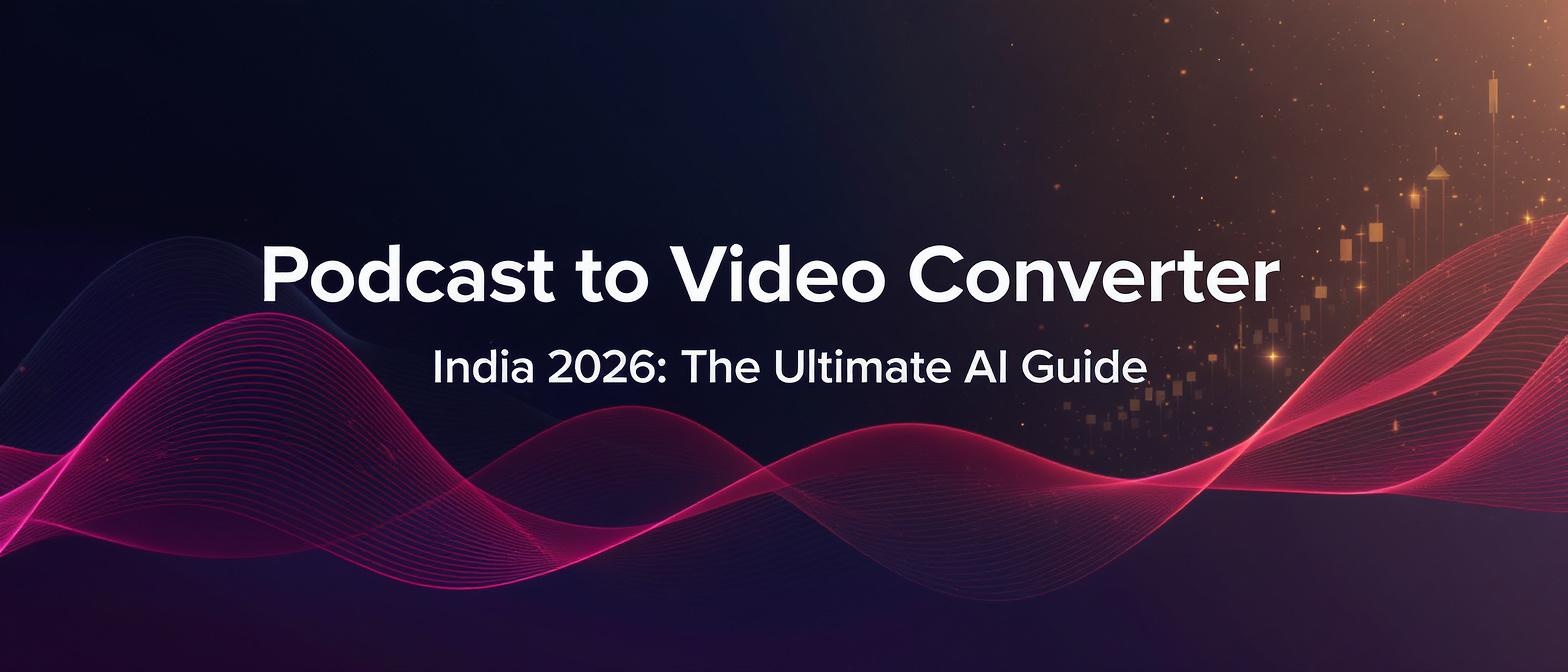The Ultimate Guide to Revolutionizing Outreach Sales Engagement with AI in 2025
Estimated reading time: ~13 minutes
Key Takeaways
- AI-based personalization can dramatically increase outreach effectiveness.
- Avoid outdated sales tactics and embrace data-driven targeting for precision.
- Leverage multichannel strategies to cut through digital noise.
- Use sentiment analysis to tailor messaging for each lead.
- Plan and measure your AI adoption to ensure a strong ROI.
In the hyper-competitive landscape of 2025, the traditional sales playbook is officially obsolete. Cold calls are met with silence, generic emails are deleted unread, and sales quotas are becoming harder to hit. If your outreach sales engagement strategy still relies on manual processes and one-size-fits-all messaging, you’re not just falling behind—you’re becoming invisible. The data tells a stark story: the AI market for sales and marketing is projected to explode to $57.99 billion by 2025, signaling a seismic shift in how connections are made and deals are closed.
Struggling to capture attention in a saturated market is the new normal for sales teams. Prospect fatigue is at an all-time high, and the sheer volume of digital noise makes meaningful connection seem impossible. But what if you could cut through that noise, not by shouting louder, but by speaking more intelligently, personally, and effectively to every single prospect? This is the promise of Artificial Intelligence in sales.
This guide is your comprehensive roadmap to mastering outreach sales engagement in the AI era. We will deconstruct the most damaging mistakes that sink modern sales efforts and provide a strategic blueprint for leveraging AI to not only fix them but to create a hyper-efficient, deeply personalized, and incredibly effective outreach machine. Prepare to move beyond outdated tactics and unlock a new level of sales performance.
The Seismic Shift: Why Traditional Sales Outreach is Failing
For decades, the foundation of sales was a numbers game—more calls, more emails, more chances to hit the mark. In 2025, this philosophy is a recipe for failure. Today’s buyers are more informed, more discerning, and more inundated with marketing messages than ever before. This has led to a critical breakdown in traditional outreach effectiveness.
According to research highlighted by Harvard Business Review, the B2B sales model has fundamentally changed, with customers demanding more value and personalization from every interaction. The old methods simply can’t deliver this at scale. The result is a cycle of diminishing returns where increased effort yields progressively worse results. Prospect burnout is real, and the cost of acquiring new customers is skyrocketing. The only viable path forward is to replace brute force with intelligent, AI-driven precision.
The 7 Deadly Sins of Modern Sales Outreach (And How AI Is the Redemption)
Many sales teams are sabotaging their own success by clinging to outdated practices. Here, we dissect the seven most critical errors in modern outreach and reveal how AI provides a powerful solution to each.
Sin #1: Aimless Targeting
The cardinal sin of sales is wasting time on the wrong people. Poorly targeted outreach lists burn through resources, tank morale, and result in abysmal conversion rates. Manually building and qualifying lead lists is not only time-consuming but also prone to human error and bias.
The AI Redemption: AI transforms targeting from a guessing game into a science. By analyzing vast datasets, machine learning models can identify patterns and create an incredibly precise Ideal Customer Profile (ICP). AI tools can then score incoming leads against this ICP in real-time, allowing teams to focus their energy exclusively on prospects with the highest propensity to buy. This data-driven approach is why AI has been shown to increase qualified leads by up to 50%. Instead of casting a wide, ineffective net, AI provides a high-powered spear for precision targeting. For a deeper dive into creating a data-driven ICP, resources from authorities like HubSpot offer an excellent starting point.
Sin #2: The Clone Attack (Generic Messaging)
“Dear [First Name]” is no longer a personalization tactic; it’s a red flag for a generic, automated email. Today’s buyers can spot a template from a mile away, and such impersonal outreach is often deleted on sight. Without genuine personalization that speaks to a prospect’s specific pain points, industry, or role, your message is just more noise.
The AI Redemption: Generative AI has made hyper-personalization at scale a reality. AI algorithms can analyze a prospect’s LinkedIn profile, company news, and industry trends to craft highly relevant email copy, connection requests, and even video scripts. This allows a single sales rep to create thousands of unique, context-aware messages that resonate deeply with each recipient. Platforms like Studio by TrueFan AI enable the creation of thousands of personalized video messages, where an AI avatar can greet each prospect by name, reference their company, and speak directly to their challenges, achieving a level of personalization that was previously unimaginable.
Sin #3: Wrong Place, Wrong Time
You’ve crafted the perfect message for the perfect prospect, but you send it at the exact moment they’re clearing out their inbox before heading into a long weekend. The result? Your message is buried, unread. Contacting leads at the wrong time is a silent killer of good outreach, and manual guesswork about the “best time to send” is notoriously unreliable.
The AI Redemption: AI-powered sales engagement platforms eliminate the guesswork. By analyzing historical engagement data across millions of interactions, these tools can predict the optimal time and day to contact each individual prospect to maximize the chances of an open and a reply. The system learns from every interaction, continuously refining its timing recommendations to ensure your message lands at the top of the inbox when the prospect is most active and receptive.
Sin #4: The Echo Chamber (Repetitive & Ineffective Follow-ups)
“Just circling back...” is one of the most dreaded phrases in sales. Most follow-up strategies are either non-existent or consist of sending the same generic message repeatedly. This approach doesn’t add value and quickly positions the sender as an annoyance, damaging brand perception and ensuring a future of ignored emails.
The AI Redemption: AI introduces intelligent follow-up sequencing. Instead of blasting repetitive reminders, AI can orchestrate a multi-step, multi-channel follow-up cadence that adds value at each touchpoint. It can automatically send a case study after an initial video, suggest a relevant blog post a few days later, or trigger a LinkedIn connection request. The system can also detect the sentiment of a prospect’s reply and adjust the follow-up strategy accordingly, ensuring every interaction is context-aware and helpful.
Sin #5: The One-Trick Pony (Single-Channel Dependency)
If your entire outreach strategy lives in email, you’re missing a massive segment of your audience. Some prospects are highly active on LinkedIn, others respond best to video, and some still prefer a phone call. Relying on a single channel is like fishing in only one corner of a giant lake—you’re ignoring where the fish are biting.
The AI Redemption: AI excels at orchestrating sophisticated, multichannel outreach campaigns. An AI-driven platform can manage and optimize touchpoints across email, social media, video messages, and even direct mail, ensuring a consistent and contextually relevant experience for the prospect. It tracks engagement across all these channels, providing a holistic view of a prospect’s interest and allowing the system to double down on the channels that are proving most effective for that specific individual.
Sin #6: The Marathon Pitch (Overly Long & Boring Content)
Prospects are busy. They don’t have time to read a 1,000-word email or watch a 10-minute demo video. In a world of dwindling attention spans, long-winded, self-indulgent content is a guaranteed way to lose your audience before you’ve even made your point. Brevity, clarity, and value are paramount.
The AI Redemption: AI is a master of concise communication. AI-powered tools can summarize lengthy case studies into a few compelling bullet points for an email. They can analyze a value proposition and generate a powerful, 30-second video script designed to capture attention immediately. By leveraging AI to create “snackable” content, sales teams can deliver their core message in a format that respects the prospect’s time and is far more likely to be consumed and acted upon.
Sin #7: The Tone-Deaf Robot (Ignoring Prospect Sentiment)
Communication is more than just words; it’s about the underlying emotion and intent. A sales strategy that ignores sentiment is flying blind. Pushing a hard sell on a frustrated prospect or sending a generic follow-up to an enthusiastic one demonstrates a lack of emotional intelligence and can quickly derail a promising conversation.
The AI Redemption: Sentiment analysis is one of AI’s most powerful capabilities in sales. AI tools can analyze the text of a prospect’s email replies to gauge their tone—are they positive, negative, or neutral? This allows sales reps to tailor their next interaction with incredible precision. With 42% of marketing and sales departments now using generative AI, according to McKinsey, this capability is moving from a novelty to a necessity. It enables teams to prioritize enthusiastic leads, de-escalate issues with frustrated prospects, and approach every conversation with a crucial layer of emotional context.
Beyond the Basics: Advanced AI Strategies for Global Outreach
One of the most significant yet overlooked advantages of AI in sales is its ability to shatter geographical and linguistic barriers. For companies looking to expand into international markets, the logistical and financial burden of creating localized sales content can be immense. Hiring multilingual sales teams, producing videos in different languages, and ensuring cultural nuances are respected is a complex and expensive endeavor.
This is a content gap where AI provides a transformative solution. AI-powered video platforms can take a single sales video and instantly localize it for dozens of markets. Studio by TrueFan AI’s 175+ language support and AI avatars break down language barriers, allowing sales teams to connect authentically with a global audience without the need for expensive, time-consuming video shoots in each region. The AI handles not only the translation of the script but also the lip-sync of the avatar, creating a seamless, native-speaker experience that builds trust and rapport. This capability turns a regional sales team into a global powerhouse overnight. For more on building a global marketing presence, the American Marketing Association provides invaluable strategic insights.
The ROI of AI: Measuring the Tangible Impact on Your Bottom Line
Adopting new technology can feel like a leap of faith, but the business case for AI in sales is grounded in hard data and measurable returns. The ROI isn’t just about efficiency gains; it’s about driving real, tangible growth across the entire sales funnel. With 80% of retail leaders expecting to adopt AI automation by 2025, the pressure to demonstrate financial impact is high.
Key metrics to track include:
- Increased Meeting Bookings: Hyper-personalized, AI-driven outreach consistently leads to higher reply rates and more meetings set with qualified prospects.
- Reduced Sales Cycle Length: By improving lead qualification and automating follow-ups, AI helps move prospects through the pipeline faster.
- Higher Conversion Rates: Better targeting and more relevant messaging mean sales reps are spending their time with prospects who are more likely to convert into customers.
- Lower Content Production Costs: Solutions like Studio by TrueFan AI demonstrate ROI through significant reductions in content production costs and measurable lifts in engagement metrics like click-through and response rates on video outreach. The ability to generate hundreds of videos for the cost of a single traditional video shoot fundamentally changes the economics of sales content.
Leading analyst firms like Gartner consistently report on the financial benefits realized by early adopters of AI, confirming that the investment pays significant dividends in both top-line revenue and bottom-line efficiency.
Implementing an AI-Powered Sales Strategy: A Practical 5-Step Framework
Transitioning to an AI-driven outreach model is a strategic initiative that requires more than just buying a new piece of software. It involves a shift in mindset and process. Following a structured framework ensures a smooth and successful implementation.
- Audit Your Current Tech Stack and Identify Gaps: Begin by evaluating your existing sales and marketing tools. Where are the biggest bottlenecks and inefficiencies in your current process? Are you struggling with lead qualification, personalization at scale, or follow-up consistency? This analysis will highlight the specific areas where AI can deliver the most immediate impact.
- Define Clear Objectives and KPIs: What do you want to achieve with AI? Be specific. Your goals could be “increase outbound meeting bookings by 30%,” “reduce time spent on manual prospecting by 10 hours per rep per week,” or “improve email reply rates by 15%.” Clear, measurable objectives are essential for proving ROI.
- Choose the Right AI Video Platform and Tools: Not all AI platforms are created equal. Look for solutions that integrate easily with your existing CRM, offer robust personalization capabilities, prioritize data security and ethical standards, and are designed for ease of use by non-technical sales teams.
- Train Your Team and Foster Adoption: Technology is only effective if people use it. Conduct comprehensive training sessions that focus not just on the “how” but also on the “why.” Show your sales team how AI will make their jobs easier, help them hit their targets, and ultimately increase their commissions. Leading organizational change effectively, as detailed in frameworks from experts like McKinsey, is crucial for success.
- Test, Measure, and Iterate: Start with a pilot program involving a small group of users. Continuously monitor your KPIs and gather feedback. Use A/B testing to compare AI-driven campaigns against your traditional methods. Use the data and insights gained to refine your strategy and scale the program across the entire sales organization.
The Future is Now: Emerging Trends in AI Sales Engagement
The evolution of AI in sales is accelerating. Looking beyond 2025, we can see even more transformative technologies on the horizon. The market for AI agents is projected to reach $7.6 billion in 2025, and these autonomous systems will soon handle entire outreach cadences, from initial prospecting and outreach to scheduling the meeting with a human sales representative.
This shift will free up sales professionals to focus exclusively on high-value activities: building relationships, strategic negotiation, and closing complex deals. Furthermore, the ethical implications of AI will become even more critical. Transparency will be key; disclosing the use of AI in communication will be essential for maintaining trust. The future of sales belongs to those who can master the art of collaboration between human and machine.
Frequently Asked Questions (FAQ)
Q1: Isn’t using AI for sales outreach impersonal?
This is a common misconception. When used correctly, AI does the opposite—it enables personalization at a scale that is impossible for humans to achieve manually. The goal of AI isn’t to replace human connection but to handle the data-intensive tasks, freeing up the salesperson to focus on building genuine relationships with highly qualified and engaged prospects.
Q2: How much technical skill is needed to use an AI video platform?
Very little. Modern tools are designed for ease of use. For instance, Studio by TrueFan AI features a browser-based, intuitive interface that feels like “Canva for AI videos,” allowing marketers and sales reps to generate professional-quality videos in minutes without any coding or video editing expertise.
Q3: Can AI help with lead scoring and prioritization?
Absolutely. This is one of AI’s core strengths. By analyzing dozens of data points (demographics, firmographics, engagement history, etc.), AI can assign a predictive score to each lead, allowing sales reps to instantly identify and focus on the prospects most likely to convert.
Q4: What’s the best way to ensure brand consistency with AI-generated content?
Choose an AI platform that allows for brand customization. This includes features like custom avatars, consistent brand colors and logos on video assets, and the ability to train the AI on your company’s specific messaging and tone of voice. This ensures all automated outreach is perfectly aligned with your brand identity.
Q5: How can a small business start with AI in sales without a huge budget?
Many AI sales tools offer tiered pricing models, including affordable starter plans designed for small businesses. The key is to start with a specific, high-impact use case, such as automating email personalization or improving lead scoring. The efficiency gains and increased sales from even a small-scale implementation often provide a rapid ROI that can fund further investment.
Conclusion: Evolve or Be Left Behind
The world of outreach sales engagement has reached an inflection point. The manual, high-volume tactics of the past are delivering diminishing returns, while a new generation of AI-powered tools is unlocking unprecedented levels of efficiency, personalization, and effectiveness.
By understanding and avoiding the “seven deadly sins” of outreach, embracing advanced strategies for global and financial management, and following a clear implementation framework, sales organizations can transition from struggling with the old model to thriving in the new one. The choice is no longer whether to adopt AI, but how quickly you can integrate it into the core of your sales strategy. The future of sales is intelligent, personalized, and automated—and it’s already here.

